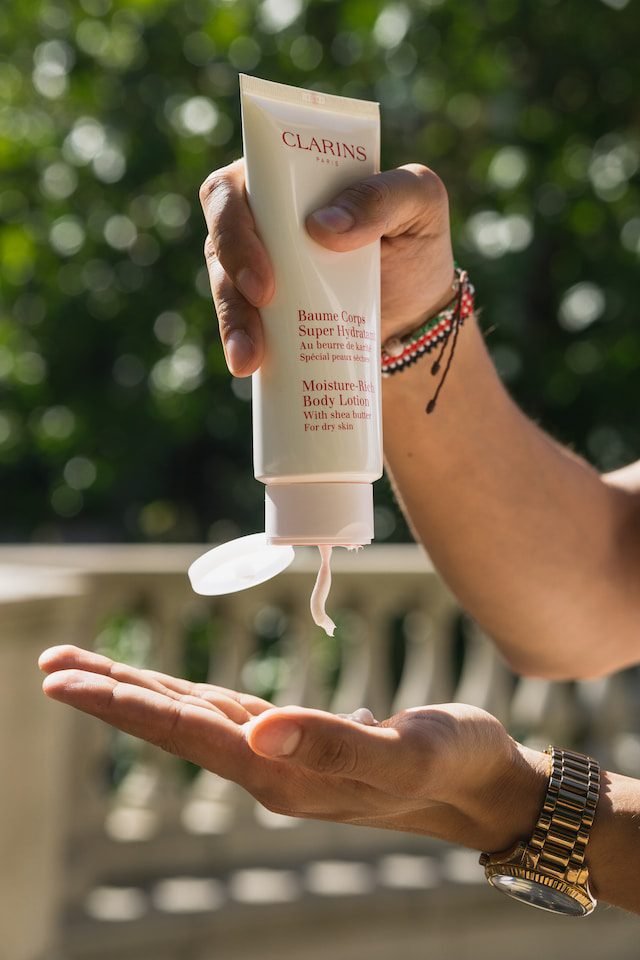Retinol can cause side effects, and one of the most common is skin irritation, often referred to as a retinol burn. This uncomfortable and unsightly condition can leave the skin red, flaky, and sensitive, making it challenging to continue reaping the benefits of retinol.
Fortunately, there are remedies available to soothe and alleviate the symptoms of retinol burns, and one such remedy is the use of Vaseline or petroleum jelly.
In this blog post, we will explore the role of Vaseline on Retinol Burns, its benefits, and how to effectively apply it for maximum relief. By understanding how to address retinol burns, we can ensure that our skincare journey remains a positive and rewarding experience.
Four Ways Vaseline Soothes Retinol Burns
When it comes to soothing retinol burns, petroleum jelly can play a crucial role in providing relief and promoting skin recovery. This humble petroleum jelly has been a staple in skincare routines for decades due to its numerous benefits. Here’s why Vaseline is commonly recommended for managing retinol burns:
1. Vaseline Forms a Protective Barrier
One of the primary advantages of Vaseline or petroleum jelly is its ability to create a protective barrier over the skin. Retinol burns often leave the skin vulnerable and sensitive, making it prone to further irritation. By applying a thin layer of Vaseline, you can shield the affected areas from external aggressors such as harsh weather conditions, pollutants, or friction caused by clothing or bedding.
2. It Improves Moisture Retention
Retinol burns can lead to dryness and flakiness, exacerbating discomfort. Vaseline’s occlusive properties help lock in moisture, preventing further water loss from the skin. This helps combat the dryness associated with retinol burns and promotes a hydrated and healthier complexion.
3. Vaseline Produces a Soothing Effect
Vaseline has a soothing effect on the skin, providing immediate relief to the discomfort caused by retinol burns. Its emollient nature helps alleviate redness, itching, and inflammation, providing a calming sensation to the affected areas.
4. Compatibility with Retinol
Vaseline is generally well-tolerated and compatible with retinol. It does not interfere with the efficacy of retinol or diminish its benefits. Therefore, it can be safely used alongside retinol products to manage burns and maintain skin hydration.
However, it’s important to note that while Vaseline can provide relief for retinol burns, it is not a substitute for proper retinol usage and skincare practices.
It is essential to follow recommended guidelines for retinol application, including starting with a lower concentration and gradually increasing usage, as well as conducting patch tests and consulting with a dermatologist.
Vaseline should be seen as a supportive remedy to address the temporary discomfort caused by retinol burns, rather than a long-term solution for skincare concerns.
How To Apply Vaseline on Retinol Burns
When it comes to applying Vaseline on retinol burns, proper technique, and consistency are key to obtaining the best results. Follow these steps to effectively apply Vaseline and soothe your skin:
1. Cleanse and Dry Your Skin
Before applying Vaseline, ensure that the affected area is clean and dry. Gently cleanse the skin using a mild, non-irritating cleanser, and pat it dry with a soft towel. This step removes any impurities and allows the Vaseline to adhere better to the skin.
2. Apply a Thin Layer of Vaseline
Take a small amount of petroleum jelly on your fingertips or a clean spatula. It is crucial to use a thin layer rather than applying a thick coat, as excessive Vaseline can clog pores and hinder the skin’s natural healing process. Start with a pea-sized amount and add more if necessary.
3. Massage Gently
Gently massage the Vaseline into the affected areas using circular motions. This helps the Vaseline to penetrate the skin and provide relief. Be careful not to rub too vigorously, as this can further irritate the skin.
4. Target The Specific Areas
Pay extra attention to areas that are particularly red, flaky, or irritated. Ensure that the Vaseline is evenly distributed and covers the entire affected area.
5. Leave Overnight or Reapply as Needed
For optimal results, leave the Vaseline on overnight to allow it to deeply moisturize and protect the skin. However, if the affected area feels dry or uncomfortable during the day, you can reapply a thin layer of Vaseline as needed for instant relief.
6. Maintain Skin Hydration
Along with Vaseline, it is essential to keep the rest of your skin hydrated. Apply a moisturizer that is suitable for your skin type to unaffected areas to prevent dryness and maintain overall skin health.
Remember, while Vaseline can provide immediate relief for retinol burns, it is still essential to address the root cause of the burn. Evaluate your retinol usage, concentration, and frequency to ensure you are following proper guidelines. If the burns persist or worsen, it is advisable to consult a dermatologist for further guidance.
How Long Should You Apply Vaseline On Retinol Burn?
The duration for applying Vaseline on a retinol burn can vary depending on individual circumstances and the severity of the burn. However, as a general guideline, you can continue applying Vaseline until the burn has healed and the skin has fully recovered.
In most cases, retinol burns can take anywhere from a few days to a couple of weeks to heal, depending on the intensity of the burn and your skin’s ability to recover. During this time, it is recommended to consistently apply Vaseline to the affected areas to provide ongoing protection, moisturization, and relief.
As the skin begins to heal and the symptoms improve, you may gradually reduce the frequency of Vaseline application. Eventually, you can transition to regular moisturizers or other skin care products suitable for your skin type.
Conclusion
Retinol burns can be an uncomfortable setback in your skincare journey, but with the right approach, you can find relief and continue enjoying the benefits of retinol.
Petroleum jelly proves to be a valuable ally in managing retinol burns, thanks to its protective barrier, moisture-retaining properties, and soothing effects.
By applying a thin layer of Vaseline on retinol burn to the affected areas, you can provide immediate relief, reduce redness, and promote the healing process.
However, it’s important to remember that Vaseline is not a standalone solution for retinol burns. It should be used in conjunction with proper retinol usage practices, such as starting with lower concentrations, gradually building tolerance, and consulting with a dermatologist.
If you experience severe or persistent retinol burns, it’s always recommended to seek professional advice from a dermatologist. They can provide personalized guidance and help you navigate your skincare routine to achieve the best results.





